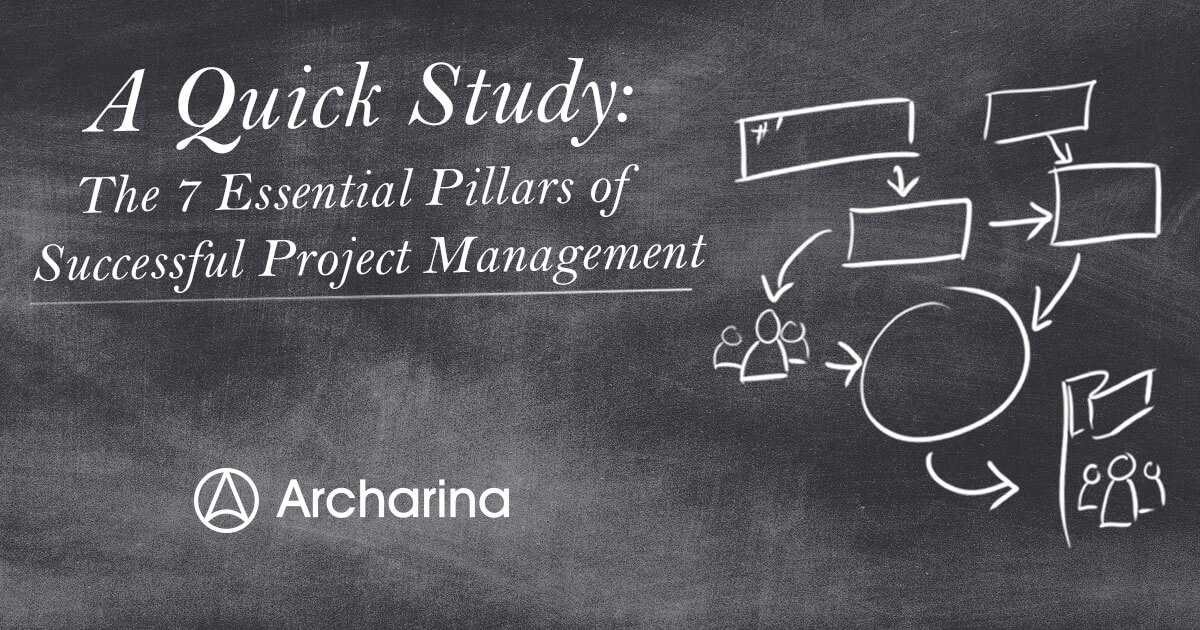A quick study: The 7 essential pillars of successful project management
The process of project management can be quite intimidating for the uninitiated – from frameworks and models to scopes, stakeholder, responsibilities and outcomes, it is a daunting process if you don’t know what you are doing.
But a thorough understanding of the process of project management in itself should help find clarity a little bit, if not drive towards project management mastery.
The fundamental idea of project management is to bring about a structure to the process of developing a product, service, or implementing, or testing, or anything of the sort. Therefore, project management is the art, no, is the process of running a project within the predefined constructs of structure, as outlined in the initial project document.
So, in essence, project management has to do with structure – structured steps that help keep the project in absolute check, and any and all slack is avoided.
Once we understand this, it is pretty evident that we can manage a project with ease, if we know the steps that are part of this structured flow.
Here are the 7 essential pillars of a good project management practice listed below, including one pillar that no business can afford to overlook:
Choosing the right framework /methodology
The fundamental step of project management is choosing the right framework or methodology that works for aspects of your project, such as scope, workflow, team, etc., This framework defines how you are going to run your project, to completion – there is no way you can switch in the middle.
So, choose wisely to suit your needs, and accurately track product deliverables, plan completion, outcomes, etc.,
There are plenty of frameworks that you can adopt – ask any good project manager and they;’ll probably tell you this.
Here is a list out of a comprehensive study that could help you choose:
- PRINCE2
- CCPM
- Lean
- XPM
- Scrum
- Waterfall
Fostering transparency and ownership
Project management, despite the name, can never have top-down view of things. Transparency and Ownership are some fundamental elements that constitute a good project plan. Letting your teammates in on the project plan fosters transparency and ownership. It allows them to understand KPIs, goals and outcomes, and it the team does not have to be hammered down for deliveries – if they understand how their work impacts the overall success or failure of the project, they would automatically contribute better.
Yet, we are still dealing with the human element here. You need something robust that would help you not only kick start this culture of transparency and ownership, but also help sustain it to completion of the project.
But fostering this culture has effects beyond the project, and permeates to other aspects of the business and organization overall. Micromanagement is out the door. Could there be better news?
Setting a realistic scope
Although this sounds like a no-brainer, it is one of the biggest problem areas in project management – any veteran in project management would tell you. Scope creep, a concept that has been a nightmare for project managers for ages, brings in changes to the scope at some level of the project at some level.
This creates ripples in project delivery, pushing back deadlines and deliveries, impacting the overall success of the project.
So, contrary to what you’d think, setting a solid scope with verifiable boundaries of scope saves a lot of time and work, not to mention money for the organization.
Following accurate and predictable schedules
Once the scope is set up for your project, another important step is to set up work schedules for everyone involved. If you want to stay productive, you have to look at setting up realistic deadlines and timelines for your project tasks.
This way, you can avoid delays, slacking, or procrastination, upping employee productivity and uplifting the general mood towards work. Employees can focus on their work and bring the best out of their deliverables, a desirable in any project.
Bad delays, on the other hand, destroy employee morale, and lead to delays in work, ultimately impacting bottom line of the project.
Effectively managing resources
Another important pillar of project management, is how you manage your resources. Resource management can be defined as a delicate balance of using and replenishing resources, which allows the project to stay at speed and avoid any delays.
Ask an individual living in a country where fuel prices are exorbitantly high, and I’m sure they’d give you a beautiful explanation of resource management.
But, kidding apart, resource management can only be done if you have a clear understanding of the resources used by the project and the availability of said resources. Perhaps in manufacturing, this could be a little bit more measurable, but it still nonetheless important in all forms of project management.
The key to this pillar is visibility – the moment you lose track of one of the resources of the project, you’d start seeing problems.
Clear engagements with stakeholders
Stakeholders in a project could be anyone from the client, to the product manager, to the sales manager and so on. Understanding the roles that each of these stakeholders play in the project itself is absolutely necessary if you want to see the project to closure.
There have been a multitude of instances where because of bad stakeholder management, projects have either been shelved or failed.
The ultimate project management tool
And for all these pillars to stand and stay strong, it is absolute essential to deploy nothing short of the best in the business, for managing your project. You can’t run the entire project of spreadsheets and phone calls – that is a sure shot way to project failure.
You need a robust tool such as Archarina’s ArcProject, which offers the ultimate visibility, flexibility and scalability for your project.
Such a tool can be the perfect answer to the strain of a remote work environment as well – something that we see could be a fixture for the future.
Conclusion
Knowing the fundamentals of project management and hashing out the details off your project with these 7 pillars in mind could spell success for your project.
Get the first 6 right and we’ll bring the 7th pillar to you – get in touch with our experts to understand how Archarina’s project management solution could be the solution to your project management problems as well.



